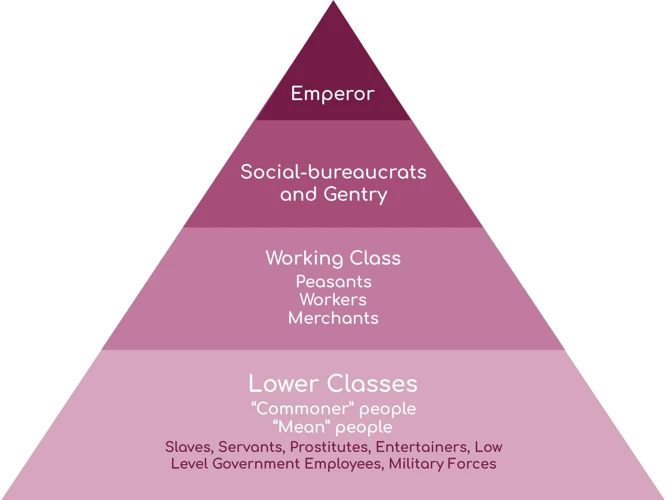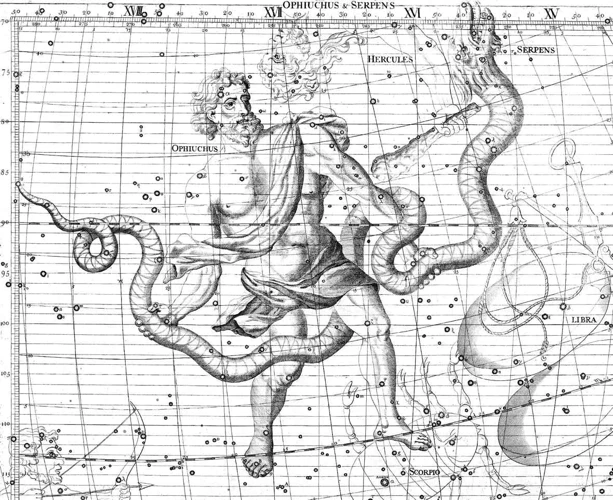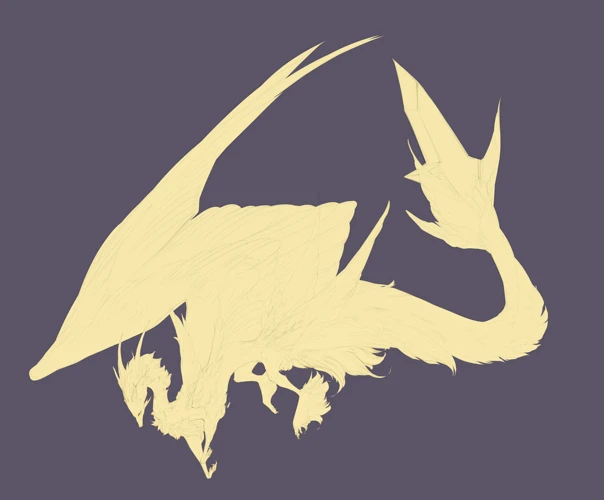Welcome to the fascinating world of daily life in Ancient Rome! In this article, we will delve into the customs, rituals, and social structure of one of the most powerful civilizations in history. From the grandeur of the nobility to the struggles of the plebeians, we will explore the various levels of Roman society and how they interacted with one another. We will also uncover the intricacies of family life, including marriage, parenting, and the role of women in society. We will unfold the rich tapestry of customs and traditions, such as religion, feasting, and funeral rites. We will delve into the realm of education and occupations, examining the schooling system and the wide range of professions in Ancient Rome. And of course, we cannot forget the arts and leisure, from the vibrant theaters and performances to the exhilarating world of sports and leisure activities. Join us on this journey to discover the vibrant, complex, and captivating world of daily life in Ancient Rome!
Contents
- Social Structure
- Family Life
- Customs and Traditions
- Education and Occupations
- Arts and Leisure
- Conclusion
-
Frequently Asked Questions
- What were the rights and responsibilities of Roman nobility?
- How did individuals become senators or equestrians?
- What occupations did plebeians typically engage in?
- What rights did Roman slaves have?
- What were the customs and rituals associated with Roman marriage?
- How were children educated in Ancient Rome?
- What roles did women play in Ancient Roman society?
- What were the main religious beliefs and practices in Ancient Rome?
- What forms of entertainment were popular in Ancient Rome?
- What were the common occupations and trades in Ancient Rome?
- References
-
Frequently Asked Questions
- What was the social structure of Ancient Rome?
- Who belonged to the nobility in Ancient Rome?
- What were the roles of senators and equestrians in Ancient Rome?
- Who were the plebeians in Ancient Rome?
- What was the status of slaves in Ancient Rome?
- What were the customs and traditions related to religion in Ancient Rome?
- What were some common feasting and entertainment practices in Ancient Rome?
- What were the funeral rites in Ancient Rome?
- What was the education system like in Ancient Rome?
- What were some popular leisure activities in Ancient Rome?
- References
- Read More

The social structure of Ancient Rome was a complex tapestry of hierarchies and classes that defined the roles and status of individuals within the society. At the top of the hierarchy were the nobility, comprising of aristocratic families who held immense power and wealth. These families often owned vast estates and held high-ranking positions in the government. Senators and equestrians formed the intermediate class in Roman society. Senators were the elite members of the ruling class, responsible for making important political decisions and legislations, while equestrians were wealthy individuals who earned their status through business and commerce. Plebeians, the majority of the Roman population, made up the lower class. They were commoners who worked in various occupations, such as farmers, artisans, and merchants. The lowest rung of the social structure was occupied by slaves, who had no rights and were considered property of their owners. Slavery was a fundamental aspect of Roman society, with slaves performing a wide range of tasks, from household chores to hard labor. This hierarchical social structure was a defining characteristic of Ancient Roman society, shaping the lives and interactions of its people.
Nobility
The nobility in Ancient Rome was the highest social class, characterized by its immense wealth, power, and influence. This elite class consisted of aristocratic families who traced their lineage back to the early days of Rome and held prominent positions in society. The nobility owned vast estates, including large agricultural lands and luxurious villas, which served as a symbol of their wealth and status. They lived extravagant lifestyles and were known for their opulent feasts and grandiose displays of wealth. In addition to their vast landholdings, the nobility also controlled significant political power. Many nobles held high-ranking positions in the government, such as consul or praetor, which allowed them to shape the laws and policies of Rome.
The nobility also played a crucial role in the military. They served as officers in the Roman army and commanded legions and cohorts during military campaigns. Their military prowess further solidified their status in society and reinforced their privileges.
Education was of paramount importance to the nobility, as they sought to cultivate refined tastes and intellectual pursuits. Noble children received a comprehensive education encompassing literature, philosophy, rhetoric, and physical training. They were often tutored by knowledgeable Greek slaves who imparted cultural and intellectual knowledge.
The nobility participated in various social and religious rituals. They had exclusive access to temples and participated in religious ceremonies dedicated to the Roman gods and goddesses. These religious practices reinforced their social standing and allowed them to demonstrate their piety.
It is important to note that while the nobility enjoyed immense privileges, they also bore significant responsibilities. They were expected to uphold the traditions and values of Rome and provide leadership in times of crisis. This included financial responsibilities, as many nobles funded public projects and sponsored games and festivals to further enhance their reputation and gain popularity among the citizens.
The social distinction of the nobility was reinforced through their distinct attire. Members of this elite class often wore luxurious clothing made from expensive fabrics and adorned themselves with precious jewelry and accessories. These distinctive fashion choices served as a visible marker of their status and set them apart from the rest of society.
The nobility in Ancient Rome held a position of significant influence, wealth, and privilege. They shaped the political, social, and cultural landscape of Rome, leaving a lasting impact on the society they inhabited.
Senators and Equestrians
Senators and equestrians played vital roles in the social and political fabric of Ancient Rome. The senators were the highest-ranking individuals in Roman society, comprising of the ruling elite. These esteemed individuals held prestigious positions in the Roman Senate, which served as the governing body of the Republic and later the Empire. Senators were appointed for life and had significant influence in shaping Roman laws, policies, and decisions. They were responsible for maintaining the stability and prosperity of the empire. Additionally, senators often came from noble families, further enhancing their status and power.
On the other hand, the equestrians formed an intermediary class between the nobility and the commoners. Equestrians were members of the equites (knights) or wealthy individuals who had reached a minimum income threshold. Their wealth usually came from commercial ventures or successful businesses. While not holding the same prestige as the senators, equestrians had considerable influence and financial power. They were involved in various activities, such as business, trade, and tax collection.
Both senators and equestrians had access to key positions in the Roman bureaucracy and military, enabling them to exert influence and accumulate wealth. Their social standing provided opportunities for connections and political maneuvering. Senators and equestrians often intermarried, further cementing their positions of power within Roman society. It is noteworthy that some equestrians could eventually become senators if they achieved political success or gained favor with the ruling powers.
The distinction between senators and equestrians was not always strictly defined, and individuals could move between these classes based on their wealth and connections. However, both groups symbolized the upper echelons of Roman society, with senators holding the highest prestige and authority. The political and social influence of senators and equestrians contributed significantly to the functioning and stability of Ancient Rome. To learn more about the fascinating world of Ancient Rome, click here to read about the physical characteristics of Ophiuchus and debunking astrological stereotypes.
Plebeians
Plebeians were the commoners and the largest social class in Ancient Rome. They formed the backbone of society and were involved in a myriad of occupations and trades. Unlike the nobility and upper classes, plebeians did not possess inherited wealth or social status. Instead, they earned a living through various means, such as farming, craftsmanship, and trade. Many plebeians were farmers who worked the land and contributed to the agricultural production of Rome. They cultivated crops, tended to livestock, and played a crucial role in sustaining the city. Others pursued artisanal trades, including blacksmithing, pottery, weaving, and shoemaking. These skilled craftspeople honed their expertise and supplied goods and services to both the elite and fellow plebeians.
In the urban areas, plebeians worked as merchants and shopkeepers, selling a diverse range of products, including foodstuffs, clothing, and household items. Some plebeians ventured into the bustling markets to carve out a niche for themselves in the competitive commercial landscape. They operated stalls, participated in trade networks, and played a vital role in the economy of Ancient Rome.
Despite their lower social standing, plebeians had the right to vote in the popular assemblies which allowed them a limited say in political matters. Over time, plebeians fought for and won certain political rights and representation, making strides towards more inclusive governance. They also formed their own assembly known as the Plebeian Assembly to address their specific needs and concerns.
It is important to note that not all plebeians were impoverished or destitute. Some plebeians managed to accumulate wealth and improve their social standing through their hard work and entrepreneurial skills. With the right opportunities and circumstances, a plebeian could rise to a higher social class and even become part of the elite.
The life of a plebeian revolved around hard work, resilience, and aspirations for a better future. They played an integral role in the functioning of Ancient Roman society, contributing to its economy, culture, and political landscape. Although they faced various challenges and inequalities, plebeians were instrumental in shaping the diverse fabric of Roman life.
Sources:
– Understanding Ophiuchus and the Zodiac
– Famous Meteorite Craters
– Physical Characteristics of Ophiuchus: Debunking Astrological Stereotypes
Slaves
Slavery was an integral and pervasive institution in Ancient Rome, with slaves playing a crucial role in the functioning of society. Slaves were individuals who were considered property and had no legal rights. They were acquired through various means, such as war, trade, or birth to enslaved parents. Slaves performed a wide range of tasks and occupations, from domestic servants to laborers in mines, fields, and construction sites. They were owned by individuals, families, or the state, and their treatment varied depending on the temperament and values of their owners. Some slaves were fortunate enough to be well-treated and even have opportunities for education or advancement, but many lived in harsh conditions with minimal rights and grueling work. Slaves were often subjected to physical punishment and lived in cramped, overcrowded quarters. They were bought and sold in markets, their value determined by factors such as age, skills, and physical condition. Some slaves managed to buy their freedom through savings or via a system known as manumission, where their owners granted them their freedom as a reward or in their will. Once freed, they became freedmen and could engage in various occupations or even own their own businesses. Slavery was deeply entrenched in Roman society and played a significant role in the economy and daily life of the time. It is important to acknowledge the often harsh and dehumanizing experiences of the enslaved population while studying the ancient world.
Family Life

Family life in Ancient Rome was centered around strong familial bonds and traditional values. Marriage was considered a vital institution and played a critical role in society. It was primarily seen as an arrangement between families for political or economic reasons rather than based on romantic love. Divorce was possible but frowned upon and carried certain social stigmas. Parenting and education were highly valued in Roman society. Fathers held a dominant role in the family, making important decisions and guiding their children’s upbringing. Education, primarily for boys, focused on subjects such as reading, writing, and arithmetic, along with training in physical fitness and public speaking. Women had limited rights and were expected to fulfill domestic roles, managing the household and raising children. However, some upper-class women had more freedom and played significant roles in politics and society. Family life in Ancient Rome was deeply influenced by traditional values and the desire to uphold social status and maintain the integrity of the family lineage.
Marriage and Divorce
Marriage and divorce held significant importance in the daily lives of individuals in Ancient Rome. Marriage was considered a crucial institution, with the primary purpose being the production of legitimate heirs to carry on the family name and ensure the continuation of ancestral traditions. Arranged marriages were common, especially among the upper classes, where political and social alliances were often prioritized over personal compatibility. The consent of both parties was required for a marriage to be legally binding, and the exchange of vows in the presence of witnesses was a customary practice.
Once married, the husband held authority over his wife and household. While the husband had legal control, the wife played an essential role in managing the household, raising children, and maintaining the family’s reputation. Divorce, though allowed in Ancient Rome, was not as socially acceptable as marriage. Both husbands and wives had the right to seek a divorce, but it was more common for husbands to initiate the process. Valid reasons for divorce included infidelity, infertility, or a lack of compatibility. Divorce proceedings involved documentation and legal representatives from both sides. In some cases, couples could separate in a less formal manner through a process known as “divortium in manu,” where the wife would return to her birth family, ending marital ties.
Marriages in Ancient Rome involved various ceremonies and rituals, including the exchange of rings and a marriage contract. The ceremony usually took place in front of friends and family, with feasting and celebrations following the nuptials. The importance of marriage and the complexities of divorce emphasized the significance of family life in Ancient Roman society.
Parenting and Education
In Ancient Rome, parenting and education played vital roles in shaping the future citizens of the empire. Education was highly valued, and parents sought to provide their children with the best opportunities for learning and intellectual growth. Wealthy families often employed tutors or sent their children to private schools, while those from lower classes received education in local schools or through apprenticeships. The curriculum focused on subjects such as reading, writing, arithmetic, and literature, with an emphasis on Greek and Latin languages. Children were taught discipline, respect, and moral values alongside academic subjects. Parenting in Ancient Rome emphasized discipline and respect for authority. Fathers held absolute authority within the family and were responsible for the upbringing of their children. Mothers, on the other hand, were expected to instill moral values and oversee the household. Children were taught to be obedient and respectful towards their elders, especially their fathers. Education and parenting in Ancient Rome aimed to prepare children for their future roles as responsible citizens and contributors to society.
Role of Women
The role of women in Ancient Rome was heavily influenced by the patriarchal nature of society. Although they were considered inferior to men, women still occupied important roles within the family and the community. The primary role of women was to be wives and mothers. Marriage was considered vital for women, as it marked their transition from girlhood to womanhood. Once married, women were expected to be faithful and obedient to their husbands, and their main responsibility was to bear and raise children. Divorce was possible but highly stigmatized.
While the majority of women in Ancient Rome were confined to domestic roles, some were able to achieve positions of power and influence, particularly in noble families. Noble women had more freedom and education than their plebeian counterparts. They were sometimes involved in politics, advocating for their family’s interests and supporting their husbands in their political careers.
In terms of education, girls from noble families received a basic education which focused on household management, including cooking, weaving, and basic literacy. Some privileged girls had access to private tutors and could learn subjects like music, literature, and philosophy. However, the education of girls from plebeian families was limited, and their primary focus was on learning domestic skills.
It is important to note that the role of women was not limited to the private sphere. Some women played significant roles in the public and religious life of Ancient Rome. Priestesses held important positions in religious ceremonies and were respected figures in society. Women also participated in religious festivals, where they had the opportunity to socialize and interact with others.
The role of women in Ancient Rome was primarily centered around their roles as wives and mothers, but there were exceptions for women from noble families who had more opportunities for education and involvement in public life. Despite the limitations imposed by the patriarchal society, women found ways to exert influence and contribute to the social fabric of Ancient Rome.
Customs and Traditions

The customs and traditions of Ancient Rome were deeply rooted in their rich religious beliefs and social norms. Religion and worship played a significant role in Roman society, with the Romans having a pantheon of gods and goddesses. They believed in performing rituals and making offerings to appease the gods and ensure their favor. Religious festivals and ceremonies were celebrated with great pomp and grandeur. Feasting and entertainment were also integral parts of Roman culture. The Romans loved to indulge in lavish banquets and social gatherings, where food and wine flowed abundantly. They enjoyed various forms of entertainment, such as theater performances, gladiator fights, and chariot races. Funeral rites were solemn occasions in Ancient Rome. The Romans believed in honoring and burying their dead with elaborate funeral ceremonies and rituals. They would conduct processions, deliver eulogies, and make offerings to the gods to ensure the peaceful passage of the deceased into the afterlife. The customs and traditions of Ancient Rome reflected their values and beliefs, shaping their daily lives and providing a sense of identity and community.
Religion and Worship
Religion and worship played a central role in the daily life of Ancient Romans. The Romans had a polytheistic belief system, meaning they worshipped multiple gods and goddesses. They believed that their gods had control over various aspects of life, from the household to the state. The Romans had a pantheon of gods, with each deity representing a specific domain. Jupiter, the king of gods, was associated with thunder and the sky, while Mars was the god of war, and Venus was the goddess of love and beauty. Temples and shrines dedicated to these gods dotted the Roman cities and were places of reverence and worship.
Rituals were a significant part of Roman religious practices. Sacrifices of animals and offerings were made to the gods as a way to seek their favor and ensure the prosperity and protection of the community. The pontiffs, the priests responsible for the proper performance of religious rituals, played a crucial role in upholding religious traditions and observances.
The Romans celebrated a wide array of festivals, many of which were dedicated to the gods. These festivals were marked by processions, feasts, and various forms of entertainment. One of the most famous religious festivals in Ancient Rome was the Lupercalia, a fertility festival held in honor of the god Janus. During this festival, young men would run through the streets, striking women with strips of goat skin as a symbol of fertility and purification.
Religion also played a part in the day-to-day life of individuals. Romans often had household gods and shrines, where they would offer prayers and seek divine protection for their homes and families. People also believed in personal genius, a protective spirit or guiding force associated with each person.
Religion and worship were deeply intertwined with every aspect of Roman life. From grand public ceremonies to personal rituals, the Romans held their religious beliefs in high regard and saw them as integral to the well-being and success of both the individual and the state.
Feasting and Entertainment
Feasting and entertainment held a significant place in the daily lives of the ancient Romans. They enjoyed lavish and indulgent feasts, which were often held in tricliniums (dining rooms) where guests would recline on couches while being served sumptuous meals. These feasts were occasions for the wealthy to display their opulence and social status. The Romans loved their food and would indulge in a variety of dishes including meats, fish, vegetables, fruits, and desserts. They also had a penchant for exotic foods such as flamingo tongues. Wine was an integral part of the feasting culture in Ancient Rome, with each course being paired with specific wines. Entertainment was also an essential component of these feasts. Musicians, dancers, and acrobats would provide captivating performances to entertain the guests. The Romans were particularly fond of dramatic and comedic performances, which were staged in grand amphitheaters and theaters. These performances showcased a wide range of theatrical arts, including plays, mime shows, and recitations. Additionally, chariot races, gladiatorial fights, and other spectacles were organized in circuses such as the famous Circus Maximus. This combination of feasting and entertainment served as a means of socializing, demonstrating wealth and power, and providing enjoyment for all classes of Roman society.
Funeral Rites
Funeral rites held significant importance in Ancient Roman society, as they were seen as a way to honor and pay respect to the deceased. When a person passed away, their body would be prepared for burial or cremation. The preparation process involved washing and anointing the body with oils and perfumes. Mourning rituals were then conducted, where family members and loved ones would engage in expressions of grief and sorrow. This included wearing dark clothing, tearing garments, and disheveling one’s hair as symbols of mourning.
After the mourning period, a procession would take place, accompanied by mourners and musicians. The procession would lead to the site of burial or cremation, which typically took place outside the city walls. For cremation, the body would be placed on a funeral pyre and set alight, while mourners observed the rituals. Once the flames had subsided, the remaining ashes and bones would be collected and placed in an urn.
Burial was another common practice, especially for the lower classes. The body would be placed in a coffin or wrapped in a burial shroud before being interred in a tomb or grave. Some tombs were grand and elaborate, reflecting the social status and wealth of the deceased, while others were simple and modest.
Funeral feasts were also a customary practice. Family and friends would gather to share a meal in celebration of the life of the deceased. These feasts served as a way to remember the individual and provide comfort to the bereaved.
In addition to these rituals, the Roman belief in an afterlife influenced the customs surrounding funeral rites. It was believed that the deceased would continue to exist in some form in the afterlife, and therefore, it was essential to ensure a proper burial or cremation.
Funeral rites in Ancient Rome were a combination of solemn rituals, expressions of grief, and commemorative feasts, all performed as a way to honor the deceased and provide closure for the living.
Education and Occupations

Education and occupations played a crucial role in shaping the lives and future prospects of individuals in Ancient Rome. Education primarily focused on grooming children to become responsible citizens and contributing members of society. Schooling was mainly reserved for boys from affluent families and consisted of learning subjects like reading, writing, and arithmetic. The primary form of education was conducted by a teacher known as a “magister,” who imparted knowledge and discipline to their students. Higher education was available to those who could afford it, and subjects such as philosophy, rhetoric, and law were taught in specialized schools. As for occupations, Ancient Rome had a wide range of trades and professions. Some common occupations included farming, blacksmithing, pottery, and construction. Skilled professionals, such as doctors, lawyers, and engineers, were highly respected and held esteemed positions in society. Additionally, the Roman military offered a path to advancement and social standing for many individuals. The opportunity for education and the diversity of occupations allowed individuals to pursue various paths and contribute to the growth and development of Ancient Rome.
Schooling and Teachers
In Ancient Rome, education played a vital role in shaping the lives of its citizens. Schooling was primarily available to children from affluent families, with the sons of nobles and upper-class individuals receiving the most comprehensive education. However, even children from lower social classes had access to basic education. The education system in Rome was divided into two levels: primary and secondary education. At the primary level, students were taught basic reading, writing, and arithmetic skills by private tutors or in small schools known as “ludus litterarius.” These tutors were typically educated slaves or freedmen. As children progressed to secondary education, they attended grammar schools called “ludus grammaticus.” Here, they studied subjects such as Latin, Greek, literature, history, and philosophy. These schools were usually run by highly educated and respected teachers, known as “magistri.” The role of the teacher was highly esteemed, and they held significant influence and authority over their students. Teachers utilized various teaching methods, including lectures, recitation, and memorization, to impart knowledge to their students. They emphasized discipline, respect, and the importance of moral values in their teachings. Education in Ancient Rome aimed not only to impart knowledge but also to instill virtues and prepare individuals for their roles as responsible citizens.
Occupations and Trades
In Ancient Rome, a wide range of occupations and trades flourished, providing its citizens with diverse opportunities for employment and economic stability. One prominent group of workers were the artisans, skilled craftsmen who were highly respected for their expertise in various trades. Artisans included potters, blacksmiths, carpenters, glassmakers, and weavers, among others. They were responsible for producing goods and crafts that were essential to daily life, from pottery and weapons to furniture and clothing.
Another significant group were the merchants, individuals engaged in trade and commerce. These individuals played a vital role in the Roman economy, importing goods from distant regions and selling them in local markets. They traveled along extensive trade routes, establishing connections and facilitating the exchange of goods and ideas. Some merchants specialized in specific items, such as spices, silk, or precious metals, while others dealt with a variety of merchandise.
Agriculture was another prominent occupation in Ancient Rome, with a significant portion of the population engaged in farming and animal husbandry. Farmers cultivated crops such as wheat, barley, olives, and grapes, which were fundamental to the Roman diet and economy. They also raised livestock, including cattle, sheep, and pigs, for food and other resources.
While many Romans worked in these traditional occupations, others pursued careers in public service, administration, law, and education. Lawyers played a crucial role in the legal system, representing clients in both civil and criminal cases. Roman educators, known as grammarians, taught a range of subjects to children, including reading, writing, arithmetic, and literature.
The construction industry also thrived in Ancient Rome, requiring a significant workforce for building projects. Skilled architects and engineers designed and oversaw the construction of grand structures, such as temples, aqueducts, amphitheaters, and public buildings. Laborers and masons worked alongside craftsmen to bring these architectural marvels to life.
It is worth mentioning that many occupations in Ancient Rome were hereditary, meaning they were passed down from one generation to the next. This resulted in certain families specializing in specific trades or industries, creating a sense of expertise and continuity within occupations.
Occupations and trades formed the backbone of Ancient Roman society, providing individuals with means for earning livelihoods and contributing to the prosperity of the empire. The diversity and specialization of these occupations played a vital role in shaping the economic, cultural, and technological landscape of Ancient Rome.
Arts and Leisure

In Ancient Rome, arts and leisure played a significant role in the lives of its citizens. The theaters were bustling hubs of entertainment, showcasing a wide range of performances and plays. Theater in Rome was a popular pastime, with various genres like comedies, tragedies, and pantomimes captivating the audiences. These performances often reflected social and political issues of the time, while also providing a source of amusement. For those inclined towards taking risks, gambling and sports were popular leisure activities. Romans engaged in activities like chariot racing, gladiatorial combats, and even animal hunts in grand arenas, marking these thrilling spectacles as a significant part of their social life. Additionally, the baths served as centers of relaxation and socialization, where people gathered to enjoy communal bathing and engage in conversations. These leisure activities provided an escape from the everyday challenges of Roman life, allowing individuals to indulge in entertainment and foster social connections. The arts and leisure in Ancient Rome offered a diverse range of experiences, reflecting the vibrancy and creativity of this remarkable civilization.
Theaters and Performances
Theaters and performances played a significant role in the daily life and cultural fabric of Ancient Rome. The Romans had a deep appreciation for the arts and enjoyed various forms of entertainment. The theaters themselves were remarkable structures, designed to accommodate large audiences. One of the most famous theaters in Rome was the Theater of Pompey, built in 55 BCE. These grand venues served as gathering places for citizens to watch various performances, including plays, comedies, tragedies, and even musical performances. Roman theater was heavily influenced by Greek theater, but had its own distinct characteristics.
Performances in Ancient Rome were not limited to theatrical productions. Gladiatorial games were immensely popular, showcasing the skill and bravery of gladiators in combat. These games took place in grand amphitheaters, such as the iconic Colosseum. The spectacles also included staged hunts, where exotic animals were released into the arena for hunters to combat. The gladiatorial games were not just about entertainment; they were also a reflection of the Roman values of courage and endurance.
In addition to theater and gladiatorial games, Ancient Roman society also enjoyed various musical performances. Music played a crucial role in both religious and secular ceremonies. Public events often featured musicians playing instruments such as lyres, flutes, and pipes. The Romans were known for their love of elaborate musical performances, and wealthy patrons would often hire musicians to entertain guests at private gatherings and feasts.
Theaters and performances provided a form of escapism and entertainment for the people of Ancient Rome. They offered a temporary reprieve from the realities of daily life and allowed individuals to immerse themselves in the world of arts and culture. These cultural gatherings also served as social events, where people from different classes and backgrounds could come together and enjoy shared experiences. The legacy of theaters and performances in Ancient Rome continues to influence and inspire the world of theater and entertainment to this day.
Gambling and Sports
Gambling and sports played significant roles in the daily lives of Ancient Romans, providing them with entertainment, excitement, and opportunities for social interaction. Gambling was a popular pastime among both the upper and lower classes. Games of chance, such as dice and board games, were frequently played for money or valuable items. Romans also placed bets on various sporting events, including chariot races, gladiator fights, and even animal races. These wagers added an extra element of thrill to the competitions and allowed spectators to potentially win big or face substantial losses. Sports, on the other hand, were not just a form of entertainment but also a display of physical prowess and skill. The Romans enjoyed a wide range of sports, including chariot racing, gladiator fights, wrestling, boxing, and athletics. Chariot racing, in particular, was immensely popular and attracted large crowds of enthusiastic spectators. The races were held at purpose-built stadiums called circuses, with the Circus Maximus in Rome being the most renowned. Here, skilled charioteers, or aurigas, competed fiercely for victory, representing different factions or teams. Gladiator fights were another popular spectacle, where trained fighters engaged in combat, often to the death, for the amusement of the crowd. The Roman passion for sports extended beyond the arena as well, with public baths and gymnasiums serving as important venues for exercise, training, and socializing. Sports and gambling were integral parts of Roman leisure, bringing people together and providing an escape from the rigors of daily life.link
Baths and Leisure Activities
Baths and leisure activities held a prominent place in the daily lives of the Ancient Romans. The Romans believed in the therapeutic and social benefits of bathing, and public bathhouses became vibrant hubs of social interaction and relaxation. These bathhouses, known as Thermae, offered various facilities for bathing, including hot, warm, and cold baths, as well as steam rooms and saunas. The Romans would spend hours indulging in these luxurious amenities, socializing, and enjoying massages and beauty treatments. Bathing was considered a communal activity, and people from all walks of life, from the wealthy nobles to the common plebeians, would come together in these bathhouses.
Apart from bathing, the Romans engaged in a wide range of leisure activities for entertainment and relaxation. The theaters played a significant role in Roman culture, offering performances such as comedies, tragedies, and pantomime shows. These theatrical performances were highly popular, and people would flock to the theaters to enjoy the vibrant atmosphere and storytelling.
Gambling was another popular pastime among the Ancient Romans. They would engage in various games of chance, such as dice games, board games like Ludus Latrunculorum, and even betting on chariot races and gladiatorial contests. These activities provided excitement and a way to socialize with fellow Romans.
Additionally, the Romans valued physical fitness and sports. They would engage in activities such as wrestling, horseback riding, boxing, and various ball games to stay fit and maintain a healthy lifestyle. The Romans also enjoyed outdoor activities like hunting and fishing, taking advantage of the beautiful natural landscapes surrounding their cities.
In their leisure time, the Romans would also visit gardens, engage in philosophical discussions, and participate in banquets and feasts. These gatherings provided opportunities for intellectual discourse, cultural exchange, and indulgence in delicious food and wine.
Baths and leisure activities were an integral part of Ancient Roman daily life, providing not only physical relaxation but also a means for socializing, entertainment, and personal well-being. The Romans understood the importance of leisure in balancing work and rest, contributing to their overall quality of life.
Conclusion

In conclusion, exploring daily life in Ancient Rome provides us with a glimpse into a civilization that was filled with complexity, diversity, and rich cultural traditions. The social structure, with its distinct classes and hierarchies, shaped the lives of individuals and influenced their roles and status within society. From the powerful nobility to the hardworking plebeians and the oppressed slaves, each segment of Roman society played a crucial role in maintaining the functioning of the city-state. Family life, with its intricate dynamics and emphasis on marriage, parenting, and the role of women, was a cornerstone of Roman society. Customs and traditions, ranging from religious practices and feasting to funeral rites, showcased the Romans’ deep connection to their beliefs and the importance of communal celebrations. Education and occupations spanned a wide spectrum, from formal schooling to a variety of professions and trades that supported the needs of the growing empire. Arts and leisure provided an escape from the daily grind, with theaters, performances, gambling, sports, and leisure activities keeping the Romans entertained.
Overall, daily life in Ancient Rome was a colorful tapestry woven with the threads of tradition, social hierarchies, and cultural richness. By comprehending the customs, rituals, and social structure of this ancient civilization, we gain a deeper appreciation for the complexity of human history and the lasting impact of the Romans on Western civilization.
Frequently Asked Questions

What were the rights and responsibilities of Roman nobility?
Roman nobility enjoyed significant privileges, including political influence, land ownership, and exemption from certain taxes. They held high-ranking positions in the government and had the responsibility of maintaining the social order and ensuring the welfare of society.
How did individuals become senators or equestrians?
Senators were chosen from the ranks of the nobility, often being appointed by the emperor or achieving the position through political connections. Equestrians, on the other hand, were individuals who achieved wealth and status through business and commercial ventures.
What occupations did plebeians typically engage in?
Plebeians were involved in a variety of occupations, including farming, trade, craftsmanship, and low-level administrative positions. Some plebeians also served in the military, contributing to the defense and expansion of the Roman Empire.
What rights did Roman slaves have?
Slaves in Ancient Rome had very limited rights and were considered property rather than individuals. They were at the mercy of their owners and could be bought, sold, or even killed at their owner’s discretion.
What were the customs and rituals associated with Roman marriage?
Roman marriages were often arranged by families and were seen as a way to strengthen social and political alliances. Marriages were usually marked by elaborate ceremonies, including the exchange of vows, the wearing of specific attire, and the throwing of nuts to symbolize fertility.
How were children educated in Ancient Rome?
Education in Ancient Rome was primarily a responsibility of the parents. Wealthy families would hire private tutors to teach their children subjects such as reading, writing, arithmetic, and music. Boys from affluent families would also receive instruction in rhetoric and oratory.
What roles did women play in Ancient Roman society?
Women in Ancient Rome had limited rights and were expected to fulfill traditional roles as wives and mothers. However, some women from noble families managed to exercise influence behind the scenes, and a few even rose to prominence in areas such as politics and literature.
What were the main religious beliefs and practices in Ancient Rome?
Ancient Romans practiced a polytheistic religion, with worship centered around gods and goddesses who governed various aspects of life. They believed in making offerings, performing rituals, and seeking the favor of the gods through prayers and sacrifices.
What forms of entertainment were popular in Ancient Rome?
Ancient Romans enjoyed a wide range of entertainment activities, including attending theater performances, watching gladiator games, participating in chariot races, and engaging in outdoor sports such as wrestling and boxing.
What were the common occupations and trades in Ancient Rome?
Ancient Rome boasted a diverse range of occupations and trades. Some of the common professions included farming, blacksmithing, carpentry, pottery, weaving, medicine, education, and military service.
References
Frequently Asked Questions

The social structure of Ancient Rome was divided into several classes, including the nobility, senators and equestrians, plebeians, and slaves. Each class had its own rights, responsibilities, and privileges.
Who belonged to the nobility in Ancient Rome?
The nobility in Ancient Rome consisted of the ruling families and aristocracy. They held significant political power and wealth, and their lineage could be traced back to the early days of the Roman Republic.
What were the roles of senators and equestrians in Ancient Rome?
Senators were members of the highest legislative body in Rome, known as the Senate. Equestrians were a class of wealthy individuals who held important positions in government, often serving as military officers or tax collectors.
Who were the plebeians in Ancient Rome?
Plebeians were the common people of Ancient Rome who made up the majority of the population. They had fewer rights and privileges compared to the nobility but were able to participate in public life and hold certain political offices.
What was the status of slaves in Ancient Rome?
Slaves in Ancient Rome were considered property and had no legal rights. They were owned by individuals or households and performed various tasks such as manual labor, household chores, and even entertainment.
Ancient Romans were polytheistic, meaning they worshiped multiple gods and goddesses. They believed in performing rituals and sacrifices to appease the gods and ensure their favor. Temples were built for worship, and priests played a crucial role in religious ceremonies.
What were some common feasting and entertainment practices in Ancient Rome?
Feasting and entertainment were vital aspects of daily life in Ancient Rome. The Romans enjoyed lavish banquets, known as “convivia,” where they would indulge in food, wine, and socializing. The wealthy would often host elaborate gatherings with musical performances, dancing, and poetry recitals.
What were the funeral rites in Ancient Rome?
Ancient Romans placed great importance on proper funeral rites. When someone passed away, their body would be prepared for burial or cremation. Funeral processions would take place, and the deceased would be honored with eulogies, prayers, and offerings. Family members and friends would gather to pay their respects.
What was the education system like in Ancient Rome?
In Ancient Rome, education was highly valued. Wealthy families would hire private tutors to educate their children. Boys and girls would receive schooling up to a certain age, where they would be taught reading, writing, arithmetic, and subjects like philosophy, history, and rhetoric.
What were some popular leisure activities in Ancient Rome?
Ancient Romans enjoyed various leisure activities, such as attending theater performances, participating in gambling and sports, and visiting public baths. These activities provided entertainment and served as a way to socialize with others.







